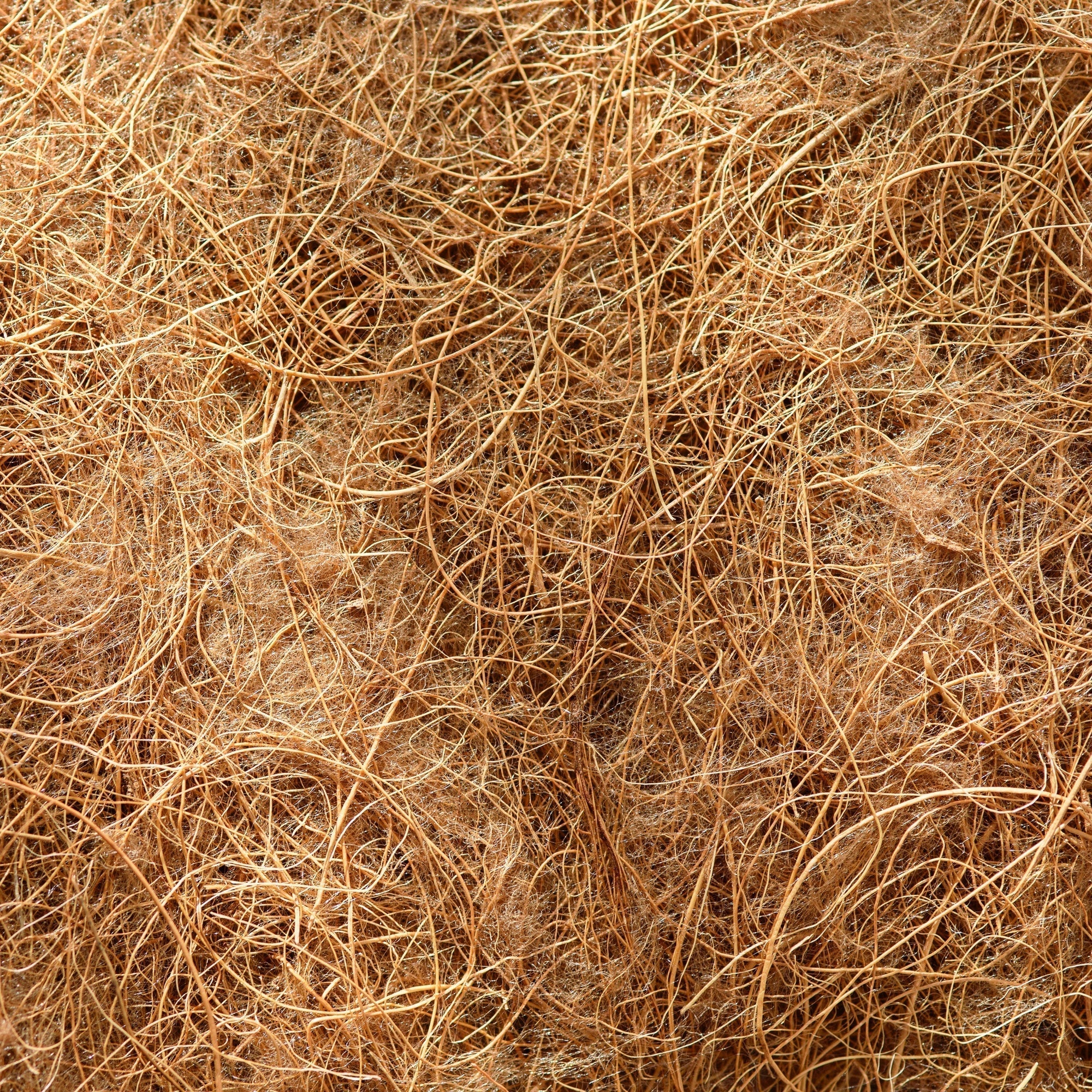Coconut Fibre

Coconut fiber is a sustainable natural material derived from coconut harvesting. Durable, breathable, and biodegradable, it is mechanically processed. Combined with natural latex, it provides optimal support for mattresses – ideal for back and stomach sleepers.
What is coconut fiber?
Coconut fiber is a natural plant fiber obtained from the shell of coconuts. It is robust, resistant to moisture, and rot-proof.
It is used for ropes, mattresses, carpets, upholstery material, and as a substrate in horticulture. Sustainable and biodegradable, it is an environmentally friendly alternative to synthetic materials.
How is coconut fiber produced?
Coconut fiber is obtained from the shell of coconuts. After harvest, the shells are soaked (for several months) or mechanically crushed to release the fibers. These are washed, dried, combed, and sorted by quality. They are then pressed into bundles.


Ecological balance of coconut fiber
Coconut fiber is a renewable raw material and is a byproduct of coconut harvesting. Since the nuts are already used for food and oil, the fiber is a particularly sustainable example of holistic resource utilization.
1. Sustainability of raw material extraction
Coconut palms grow in tropical regions – especially in India, Sri Lanka, Indonesia, and the Philippines. The harvesting of the fibers does not affect the tree population, as only the ripe coconuts are harvested. The further processing of the outer shells into fibers creates additional value and jobs in the countries of origin.
2. Processing and energy consumption
The processing of coconut fibers is comparatively low in energy. After drying and untangling, only mechanical further processing often occurs. The use of natural latex as a binding agent instead of synthetic adhesives is particularly environmentally friendly.
A disadvantage may be the transport from overseas, which increases the CO₂ footprint. However, the ecological benefit remains positive when the fibers are used as a byproduct and not specifically cultivated.

3. Durability
Coconut fiber impresses with its high dimensional stability and durability. It is naturally elastic and resistant to mold, moisture, and pests. Products such as mattress cores or carpets made from coconut fiber are durable and retain their shape for a long time.
4. Reusability
Coconut fiber products can be fully recycled or composted at the end of their lifecycle. Particularly noteworthy is the reusability of materials in new mattresses or as insulation material. Energetic utilization in biomass facilities is also possible.
5. Biodegradability
Coconut fiber is a completely biodegradable natural material. If it is not further processed or treated, it decomposes completely and returns valuable nutrients to the soil – completely without pollutants.
Technical properties of coconut fiber
| Property | Value |
|---|---|
| Material type | Plant fiber |
| Density | approx. 0.20 – 0.25 g/cm³ (raw), compressed higher |
| Compressive strength | Low to medium (depending on processing) |
| Bending strength | Medium (good with latex bonding) |
| Hardness | Soft to medium hard |
| Elasticity | Very elastic, especially in mat form |
| Resistance | Resistant to mold, rot, pests |
| Weather resistance | Limited (suitable for indoor use) |
| Color | Light to dark brown |
| Workability | Very good, usually without chemical additives |
| Use | Mattresses, carpets, insulation materials, ropes, upholstery |
Coconut fiber at ekomia
Due to its natural origin, breathability, and sustainability, we use coconut fiber as filling and supporting material in mattresses.
We only use coconut fiber from controlled cultivation and combine it with natural latex to combine the advantages of both materials.
This creates an ecologically sensible, durable, and vegan material that is completely biodegradable – in line with our sustainable design philosophy.

Questions & answers for Coconut Fibre
Here we answer some questions about Coconut Fibre that are frequently asked by other users.
Do you still have any questions?
Do you have any questions or comments on this topic? Write a comment, we will be happy to answer.

